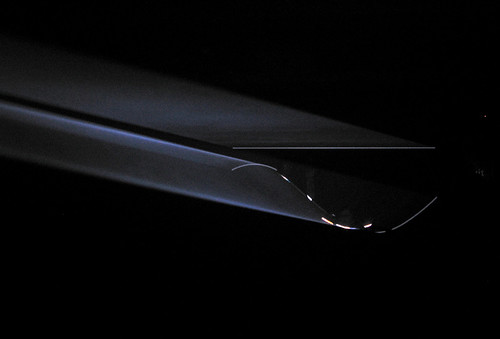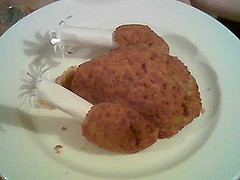As we neared the centre of the park, the light drizzle started to increase in intensity and we looked for somewhere to take shelter. The Serpentine Gallery looked closed, but we we headed for its doors anyway, in the hope that we could find hide from the rain in its doorway.
Despite its appearance, the gallery was in fact open, so we stepped inside to see what was on display.

I had never before seen the work of Anthony McCall. The main focus of this show is a selection of works with titles like Long Film for Four Projectors 1974 and Line Describing a Cone 1973. These pieces are essentially darkened smoke-filled rooms, with projectors throwing ever-changing sheets of light through each gallery. The resulting three-dimensional works of art fill the room, inviting you to play with them and interact with them.
It's hard to describe how much fun this is. You walk through the rooms, disrupting the beams of light and changing the way the 'objects' appear to other viewers. One of the shapes evolves into a perfectly enclosed cone, so before it disappears, you excitedly insert your head into the cone's interior, to see it from the inside. Suddenly a chink appears in the tube of light as the head of a passing child intercepts the bottom of the beam.
Gradually, the shape changes and becomes two parallel sheets of light. You use limbs and digits to poke holes in the sheets, and watch your body cutting enormous shadows into any part of the object further from the light source than yourself.
Anthony McCall's work is showing at The Serpentine Gallery until 3rd of February. If you're passing anywhere near Hyde Park, I'd certainly recommend calling for a play.
So much fun.




